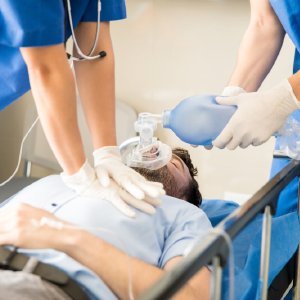Only 1 in 9 People Suffering from Addiction Seek Treatment

The Centers for Disease Control and Prevention (CDC) recently reported that heroin deaths in the U.S. almost quadrupled from 2000 to 2013. The trend continues to worsen with nationwide heroin-related deaths increasing by an alarming 39.3 percent from 2012 to 2013 alone.
The Cost of Addiction
According to the newly released CDC report, the U.S. experienced around 44,000 drug-overdose deaths in 2013. Powerful and highly addictive opioid prescription painkillers were involved in more than 16,000 of those deaths.
Substance abuse costs the United States more than $600 billion annually. The cumulative financial loss accrues in healthcare, loss of productivity in the workplace and crime. A year of incarceration for drug-related offenses costs more than $31,000 and drug abusers are frequently repeat offenders. Imprisonment exacts an even greater price in locations such as New York City, averaging and annual cost-per-inmate of $167,731 in 2012.
While the financial cost is tabulated in black and white, the cost in human loss, suffering and destroyed lives is not so easily measured.
Addiction Treatment
Vermont recently implemented measures to address its heroin-abuse crisis. The heroin crisis in Vermont and nationwide was the subject of Governor Peter Shumlin’s 2014 State of the State address. Many initiatives addressing the heroin crisis proposed by the Governor were enacted, including grants to addiction clinics in efforts to reduce treatment waiting lists.
As a result, nearly 40 percent more Vermont residents are now seeking addiction treatment in comparison to a year ago.
Three federally-approved drugs are currently used to treat chronic addiction to opioids: methadone, buprenorphine and Naltrexone/Vivitrol. Methadone is the most used. While it is regarded by some to be a successful method of treating opioid addiction, the individual remains drug-depdendent on the substitute drug and Methadone is notoriously difficult to withdraw from.
The Future
The states and the CDC continue to implement drug-overdose prevention strategies which include tracking the opioid abuse epidemic, increasing public health intervention, and providing prescribers with guidance, data and tools.
According to the National Institute on Drug Abuse (NIDA), addiction treatment is directed towards helping the person achieve abstinence, and becoming a full participant in society.Abstinence infers the self-enforced restraint from drug or alcohol use.
Using a substitute drug to replace dependence on opioids such as prescription painkillers or heroin doesn’t fit the abstinence model.
According to NIDA, the drug addiction relapse rate after treatment is 40 to 60 percent. That is a red flag that the person is still struggling with substance dependency not successfully addressed in whatever form of substance abuse treatment they sought.
The addict or alcoholic knows the overwhelming physical and mental cravings for his or her drug of choice. They know the substance abuse-caused depression which drives their continued drug use. The addiction lifestyle itself creates even more depression. And every addict or alcoholic is trapped in their drug use by their guilt stemming from the harm caused to self and others.
Drug and alcohol treatment based on a true understanding of the mechanics underlying addiction would greatly assist in establishing workable treatment programs. Effective drug and alcohol rehabilitation must address the underlying factors which trap the individual in drug use and help the addict gain the skills and understandings necessary to live a successful life, free from drug or alcohol abuse.
A dismal chance of long-term success when seeking sobriety does not fuel a desire to seek treatment. On the other hand, for an addict knowing that he or she could truly make it, and go on to live a drug-free life could be the greatest motivation of all.


